The Deltoids
There are many muscles that make up what we call the "shoulder" but, today, we are referring to the deltoids...the largest and outermost muscles of the shoulder. The deltoid muscle is divided into three parts: the anterior head, the middle head, and the posterior head. For complete muscular balance, you should exercise all three heads of the deltoid throughout the week. Keep reading to learn more exercises for all 3 deltoids, OR, click the image below to watch exercise demos.
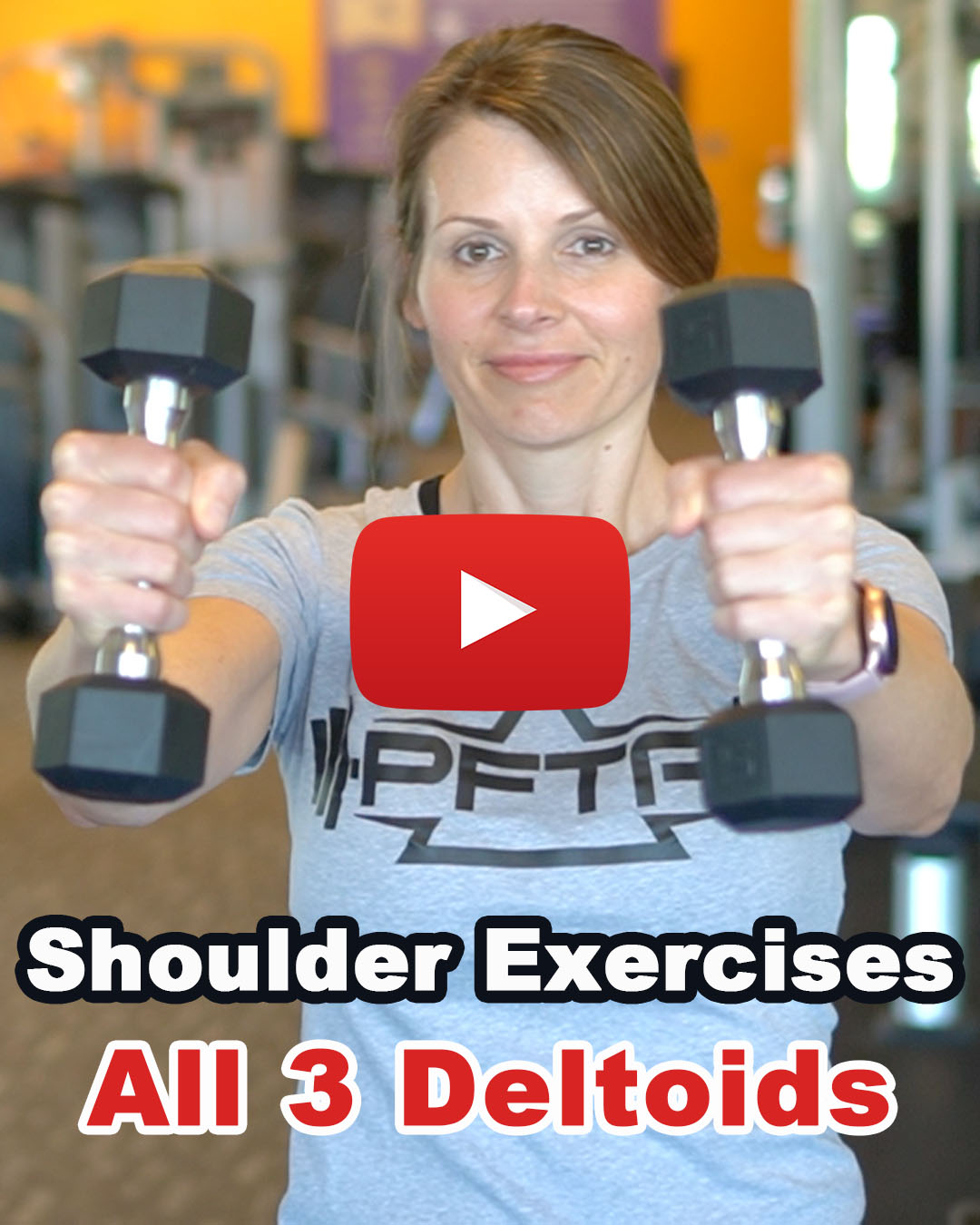
Deltoid Muscles
As you can see by the picture below, the three deltoid muscles are positioned at different parts of the shoulder. Because of their position each of the deltoids performs a different function. Today, we are going to cover exercises for all three deltoids starting with the anterior deltoid.
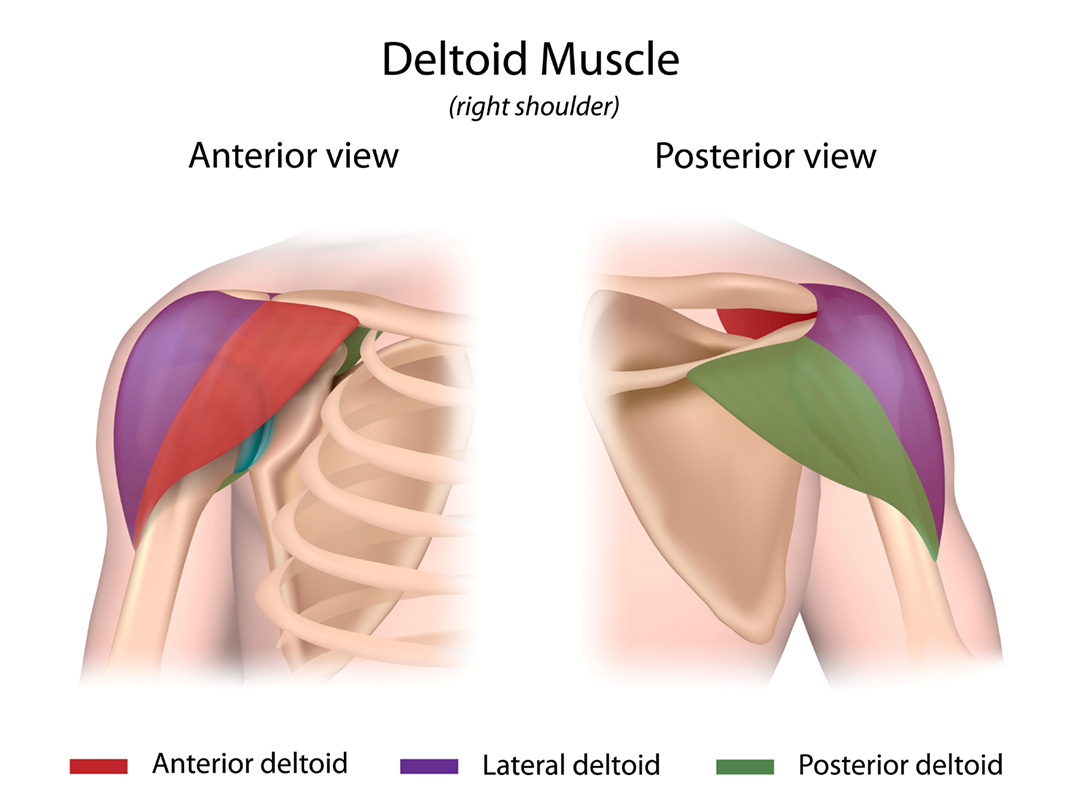
Anterior Deltoid
If you’re performing lots of chest exercises in your weekly routine, then your anterior deltoid is getting lots of work as well. The anterior deltoid is the front shoulder muscle that assists with most of your chest movements like bench press, push-ups, and many other chest exercises. The anterior deltoid is responsible for horizontal shoulder adduction and shoulder flexion. Therefore, if you really want to isolate the anterior deltoid, and achieve maximum muscle exhaustion, then the best exercise to add to your routine is the dumbbell front raise (pictured below).
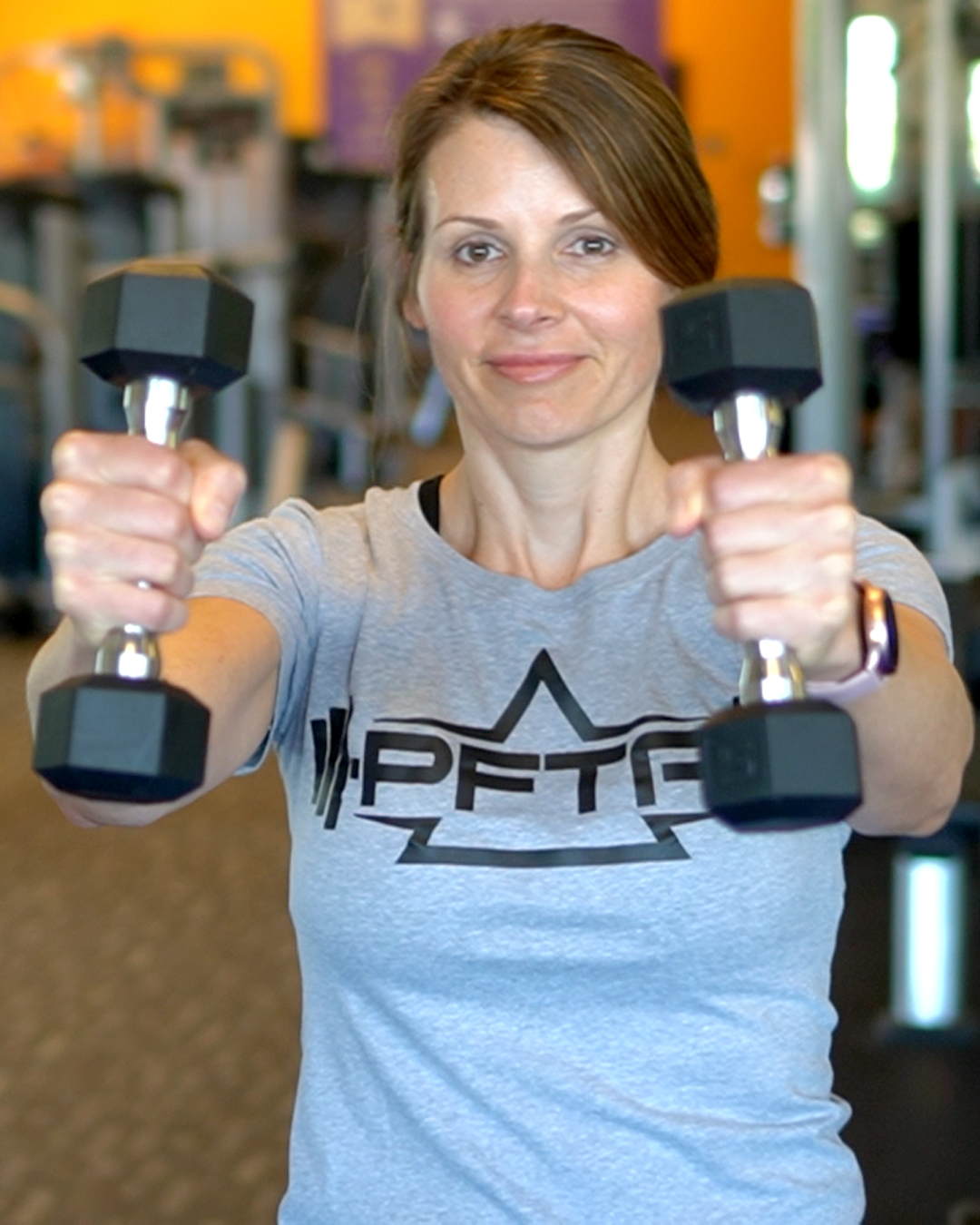
Front Raise
Dorian Yates (2007) encourages all weightlifters to include the dumbbell front raise (pictured above) in their shoulder workouts even if you've already done lots of chest exercises. Mr. Yates explains that doing chest exercises does NOT stimulate the anterior deltoid to its maximum, and that further work is needed. Moreover, it is best to perform front raises with a neutral grip to minimize shoulder impingement at the top of the movement. Finally, you'll want to pick a weight that allows you to fail at the 8-12 rep range if your goal is maximum hypertrophy. If your goal is muscular endurance, then you'll want to perform 15+ reps.
If you need more help with exercises, or if you need a nutrition plan, click on the image below to speak with a PFTA certified personal trainer.

Middle Deltoid
Continuing from front to back, the next muscle in line is the middle deltoid. The middle deltoid is the muscle that gives your shoulders its width. If you want wide shoulders, then you definitely need to work out the middle deltoid. The most popular exercise for the middle deltoid is the dumbbell lateral raise (pictured below). Start with the dumbbells a few inches from your hips and lift the dumbbells to shoulder height. Try not to use momentum in the beginning of the set. As your shoulder fatigues and you need a little help, your trainer can assist you by lifting the weights while you slowly lower them to the starting position.
You can also use cables or bands to perform lateral raise. Again, choose a comfortable resistance and perform 8-12 reps.
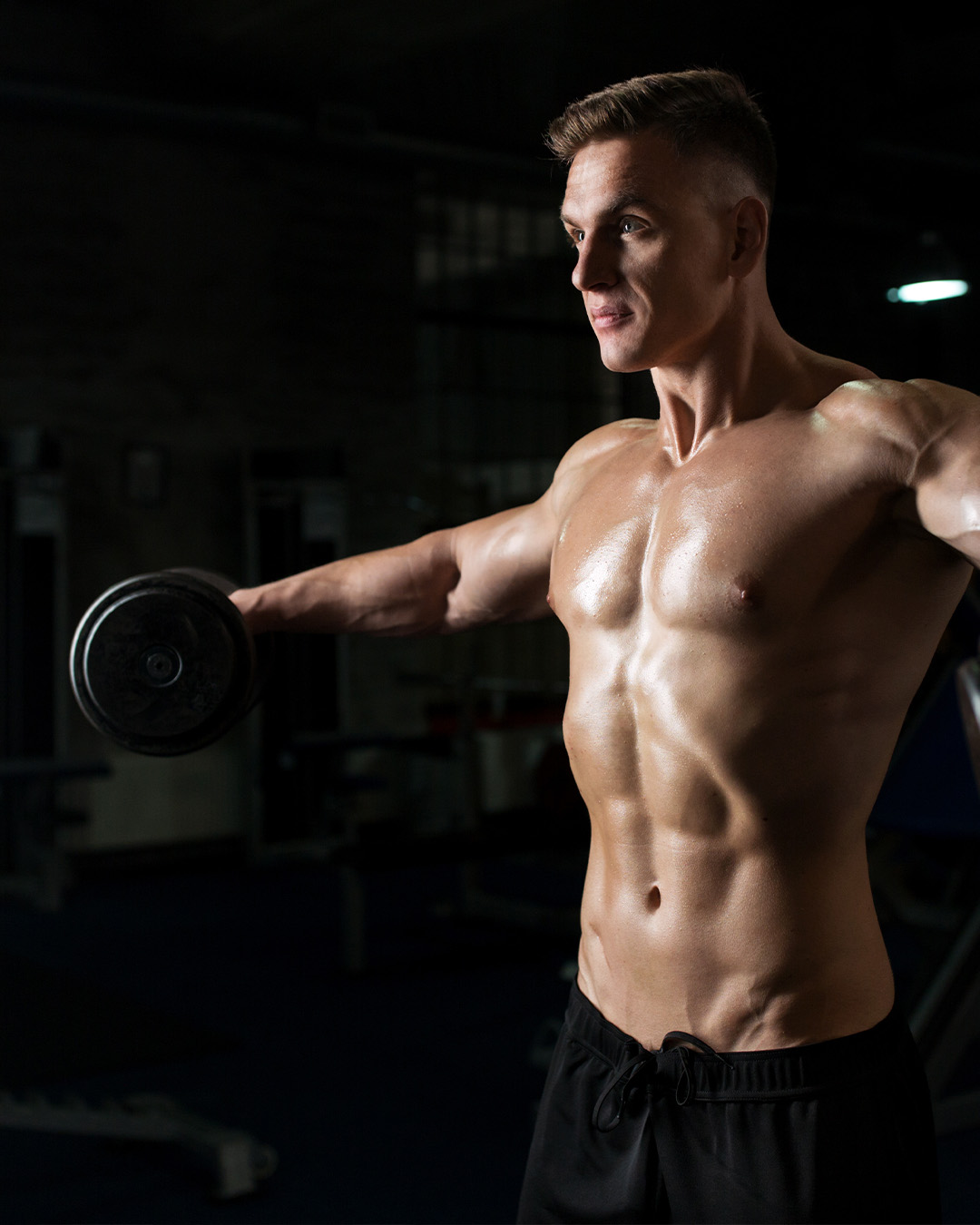
Momentum
Normally, experts will tell you to minimize momentum, and for the most part, this is true. You should do as many reps as possible with strict form. But, when it feels like you can't do any more, swing your hips a little to help the weights up, then slowly lower the weights back to the starting position. Using momentum to get in a few extra reps will give your shoulders a good burn.
Shoulder Press
Another popular exercise for the middle deltoid is the shoulder press. But remember, when you're executing the shoulder press, the range of motion dictates which muscles are the primary movers. For example, if the movement is primarily above your shoulders, the primary mover is the upper trapezius. If you want to target the middle deltoid, you need to include a full range of motion, especially the lower part where your middle deltoids gets utilized.
Speaking of traps, we've written an article and made a video with exercise demonstrations for your traps. Click the image below for more info on working out your upper, middle, and lower traps.
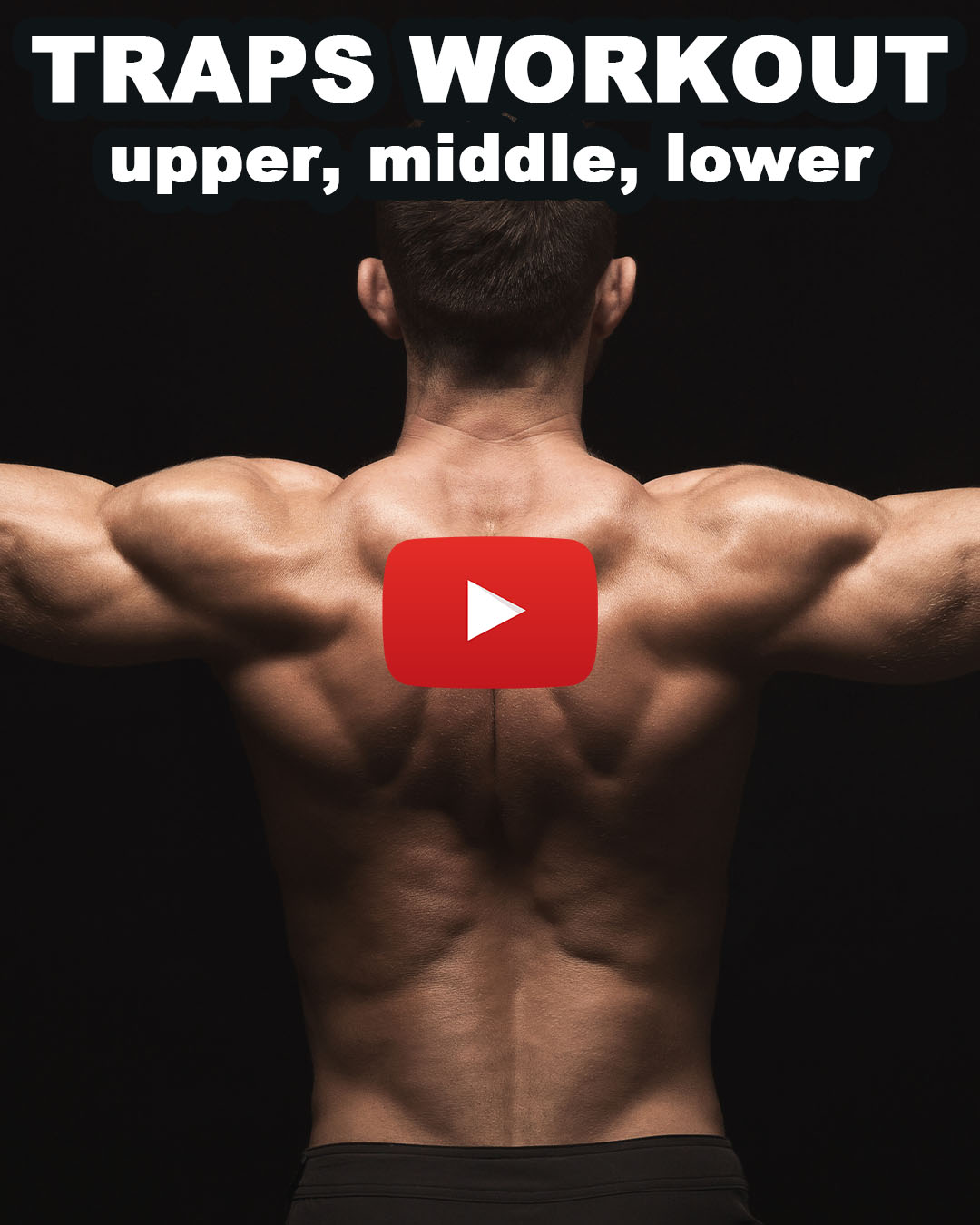
Upright Row
One of my favorite exercise is the upright row. It's a great way to engage both the middle deltoid and the upper traps. It's very similar to the shoulder press and can also build strong, wide shoulders. Don't forget, to build big muscles, you'll need to pick a weight that challenges your muscles for 8-12 reps. You'll also need to consume plenty of protein.
Furthermore, try using several different exercises to really bring out your middle deltoid. The middle deltoid doesn't get as much work as the anterior deltoid during chest exercises, so you need to make sure this muscle gets the attention it deserves.
And if you want to learn more about exercise science and sports nutrition, click the image below to review our classes.

Equipment
All three shoulder movements can be accomplished with dumbbells. If you don't have dumbbells at home, you can buy a small set of dumbbells from your local sporting goods store. If you have a gym membership, you'll find dumbbells and various other equipment to help you hit all the shoulder muscles.
Let's move on to the last deltoid, the one on the rear.
Posterior Deltoid
Last but certainly not least, is the posterior deltoid. The posterior deltoid is probably the most ignored of the three deltoid muscles. But unfortunately, an ignored posterior deltoid may cause upper crossed syndrome. Upper crossed syndrome is another term for a rounded upper back or rounded shoulders. This occurs when the chest muscles are too tight and/or the back muscles are too weak. Stronger back muscles are recommended to keep yourself from this postural distortion.
Luckily, we've written an article on how you can prevent or correct rounded shoulders. Or, if you prefer to watch the video, you can click on the image below.
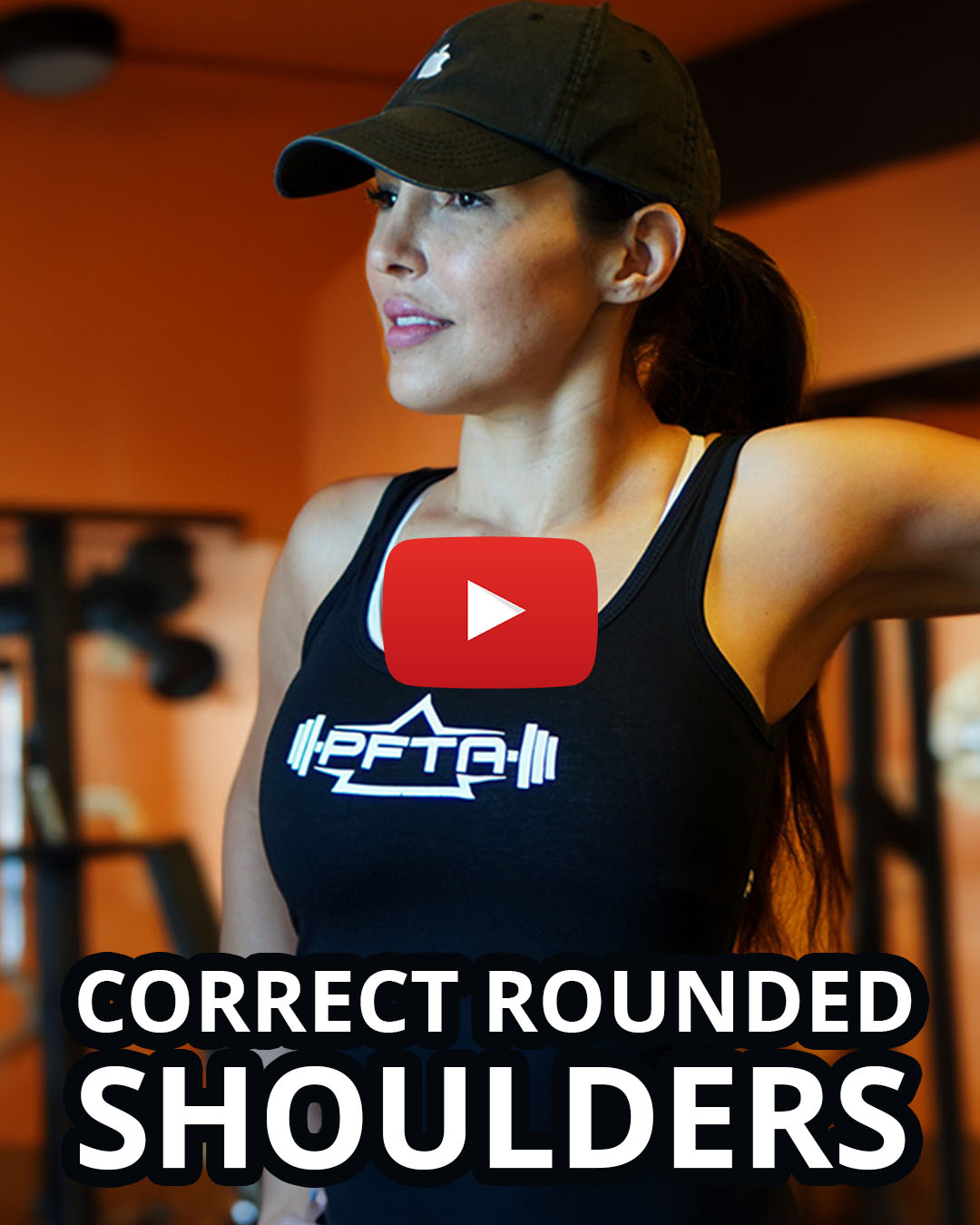
Back Muscles
In the video above, we show exercise demos for the reverse pec deck and bent laterals. These movements will not only strengthen your posterior deltoids, but they will also strengthen other back muscles like the mid-traps and rhomboids. The more back muscles you can target with your BACK workout, the less chance the upper crossed syndrome sneaks into your posture. Speaking of back muscles, want to know which exercise is best for your lats? Click the image below to watch our lat pulldown video.

The Seated Row
Finally, if you don't have access to the reverse pec deck or you can't perform bent laterals, then the seated row is a great alternative. Although the reverse pec deck may be superior, Frank et al. (2015) showed that you can still work out your posterior deltoids with the seated row. We've created a video to show you two different ways to perform the seated row. The high row may better better for your posterior deltoid, but the low row is great for your lats! Click the image below to watch both versions of the seated row.
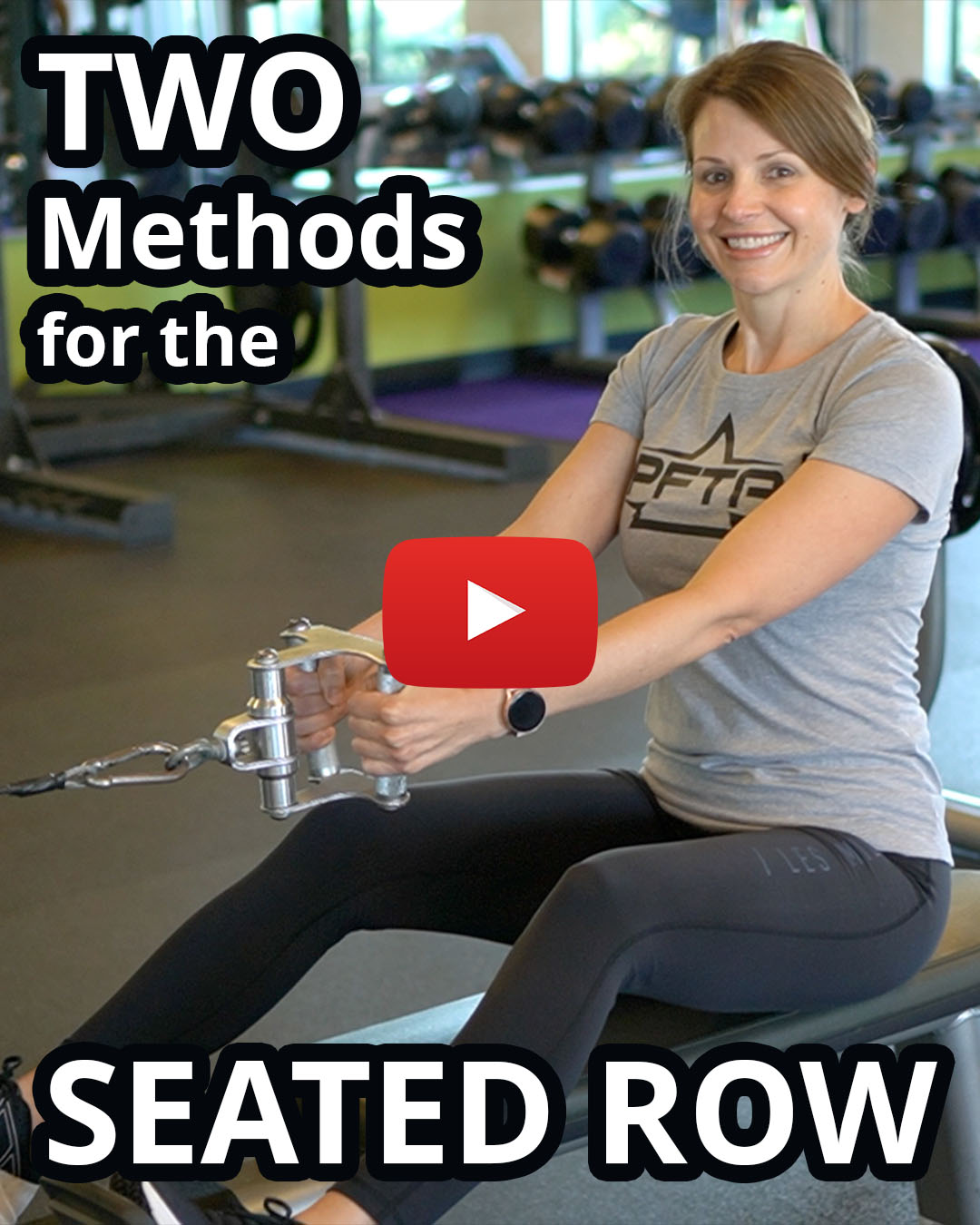
Knowledge is Power
And if you want more tips on exercise and nutrition, add your email below. You'll receive weekly tips directly to your inbox. Plus, you'll also receive the occasional coupon code for our classes.
Summary
As you can see, it is important to schedule all three deltoid muscles in your weekly workouts. How you schedule them is up to you. You can have a shoulder day, and exercise all three heads on the same day, OR, break them up and hit them on separate days.
Another important aspect to assure you're getting stronger deltoids is your protein intake. We've written an article on how much protein each person should consume.
Or, if you prefer to watch the video on estimating your protein, fats, and carbs, click on the image below. Happy health and happy training!!

Written By
RAescobar, PFTA instructor and personal trainer
Sources:
Franke Rde A, Botton CE, Rodrigues R, Pinto, RS, Lima CS. 2015. Analysis of anterior, middle and posterior deltoid activation during single and multijoint exercises. The Journal of Sports Medicine and Physical Fitness: 55, 714-721.
Yates, Dorian. 2007. Front and Center. Flex. July 2007. Vol. 25 Issue 5, p306-306.